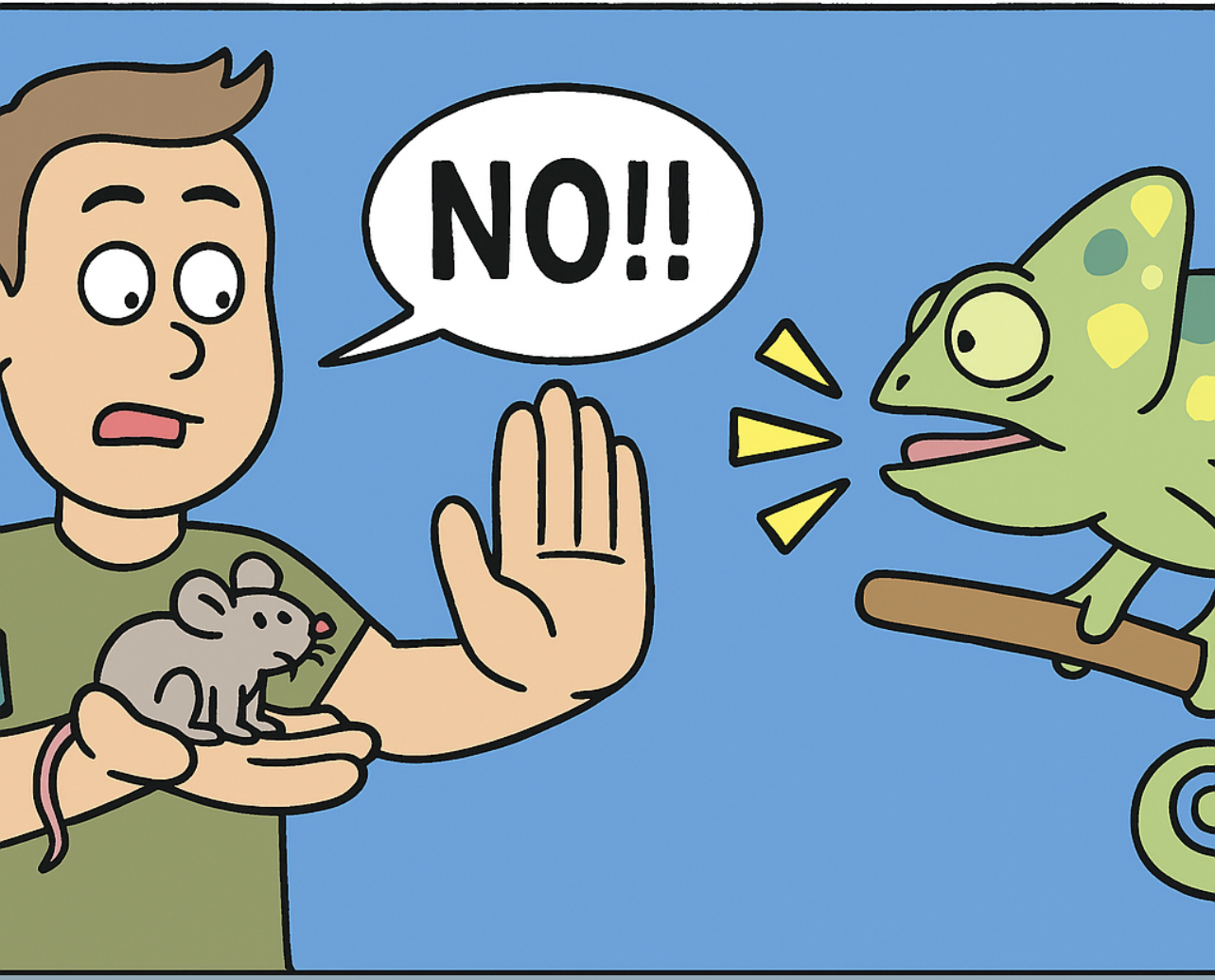Myth 73: “Never Feed Indigenous Vertebrates (Lizards, Birds) to Chameleons In Captivity”

In the pursuit of dietary variety and nutritional richness, some chameleon keepers consider offering small lizards (e.g., the brown anole Anolis sp. in Florida) as supplemental food for captive chameleons. This practice provokes strong debate, ranging from enthusiastic support to strict refusal.
---
Supporting Arguments
• High nutritional value: rich in proteins, fats, and minerals.
• Unique nutrient availability: fat-soluble vitamins (especially vitamin A), amino acids, and other compounds in easily digestible forms.
• Analogous composition: vertebrate prey closely mirrors the body composition of chameleons themselves.
• Local availability: in some regions, small lizards are abundant and easily collected.
• Low or no cost: often free, or obtainable with minimal expense.
• Incidental access: lizards may enter outdoor enclosures spontaneously.
• Natural opportunism: wild chameleons are documented consuming vertebrates (including lizards and birds) when available, sometimes of surprising size.
• Species-specific preference: certain large species (Furcifer oustaleti, Calumma parsonii, Chamaeleo calyptratus, Trioceros melleri) show innate attraction to vertebrate prey.
---
Arguments for Strict Refusal
• Replaceable nutrition: vertebrate prey offers no irreplaceable nutrients compared to varied insect diets or occasional feeder rodents.
• Limited ecological availability: vertebrate prey is rare in the wild for many species.
• Non-essential behavior: hunting vertebrates is opportunistic, not vital.
• Sentimental objections: lizards are often perceived as pets rather than food.
• Misinterpreted cruelty: tail-whipping or post-mortem movements may be wrongly seen as suffering.
• Uncontrolled sourcing: wild-caught lizards may carry pesticides, toxins, or indigestible matter.
• Parasite risk: although cross-species transfer is generally low, roundworms and cryptosporidians remain possible hazards.
• Bioaccumulated toxins: as predators, lizards may concentrate heavy metals or pollutants, especially in urban or agricultural environments.
---
Summary
The decision to feed vertebrates to captive chameleons ultimately rests with the keeper's management philosophy. Nutritional arguments lean slightly pro, but ecological, ethical, and safety concerns weigh heavily against indiscriminate use.
---
Why Indigenous Species Are Strictly Prohibited
Several critical factors explain the strong recommendation against feeding native vertebrates to chameleons:
• Legal protection: most indigenous lizards are protected by conservation laws; capturing or killing them is illegal.
• Ecological importance: lizards play vital roles as predators in fragile ecosystems; removing them weakens biodiversity.
• Population vulnerability: some species are easy to catch yet reproduce slowly, risking local extinction.
• Parasite specificity: when parasites are present, they are most often in native species. Even if transfer risk is low, precaution dictates avoidance.
---
Final Recommendation
If vertebrate prey is considered, never use indigenous species. Restrict feeding to traded or introduced/invasive species only. When in doubt, consult certified experts, specialist groups, or local authorities. In regions where chameleons are non-native (Europe, USA, Asia), this caution applies universally—not only to vertebrates but also to protected invertebrates (insects, arachnids, snails).